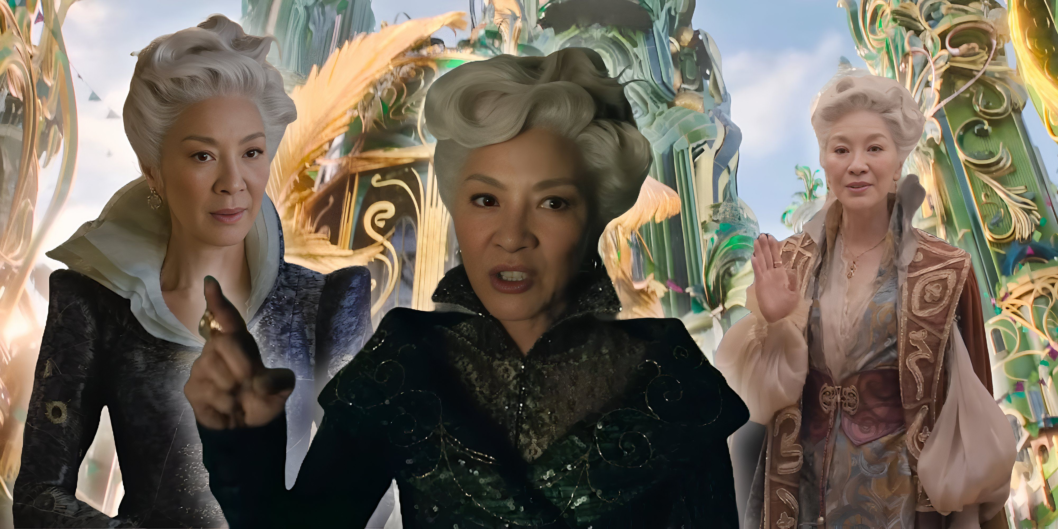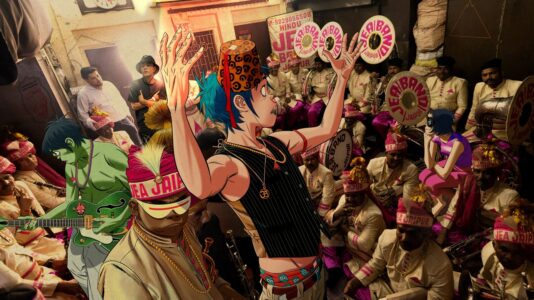Exploring Costume Design in Wicked: The Colorful Symbolism of Madame Morrible
In the stunning adaptation of Wicked, the use of costume design plays a pivotal role in storytelling, particularly through the character of Madame Morrible. This character, portrayed by Michelle Yeoh, serves as a critical figure in shaping the narrative as she interacts with the lead characters Elphaba, played by Cynthia Erivo, and Glinda, played by Ariana Grande. The film, which is directed by Jon M. Chu, is set to be released on November 22, 2024, and has already garnered attention for its Academy Award-nominated costume design.
Costume Design as Character Development
Costume designer Paul Tazewell has crafted outfits that not only enhance the visual appeal of Wicked but also provide insight into character motivations and relationships. Madame Morrible’s outfits, predominantly blue at the beginning of the film, position her as a seemingly supportive ally to Elphaba, the misunderstood protagonist. This choice in color helps the audience recognize her as part of the familiar environment at Shiz University, where shades of blue prevail.
When Morrible first meets Elphaba, she dons a light blue outfit layered under a brown stole, symbolizing her initial alignment with Shiz students. As interactions deepen, particularly when she teaches Elphaba magic, Morrible’s wardrobe transitions to darker hues, mirroring her shifting role in Elphaba’s journey. Fiyero, another character who supports Elphaba despite her darker persona, also wears dark blue, suggesting that characters donning darker colors may share a bond or stand in opposition to societal norms.
Visual Representation of Alliances
A particularly striking moment comes when Morrible presents Glinda with her training wand during a scene at the Ozdust Ballroom. In this instance, she is seen wearing purple—a blend of her blue and Glinda’s pink—a visual representation of the budding friendship and magic shared between the two. This color choice signifies Glinda’s newfound position in the magical community, underscoring the evolving dynamics among the three central characters.
Shifting Allegiances and Villainy
The climax of Morrible’s character arc is highlighted through her costuming in the film’s final scenes. When Madame Morrible reappears in a dark green dress, the stark contrast signifies her complete shift from ally to antagonist, aligning herself with the Wizard, played by Jeff Goldblum. This transformation serves to reinforce the notion that Morrible’s support for Elphaba was always opportunistic, based on her potential power rather than genuine mentorship. The darker tones in her final appearances directly connect her to villainous intent, complicating viewers’ perceptions of morality and allegiance within the story.
Moreover, the film embodies the theme that dark colors are linked more with perceptions of "wickedness" than actual evil. This layered approach to costume design leads audiences to question the societal constructs that link aesthetics with morality, particularly as Elphaba’s character is misunderstood and demonized because of her darker appearance while she embodies a strong sense of justice.
Significance of Costume in Wicked
The use of color, particularly through Madame Morrible’s costumes, highlights the nuanced storytelling within Wicked. The careful thought behind costume choices serves not just to embellish the vibrant world of Oz but to deepen the psychological and emotional connections between characters. Tazewell’s work invites viewers to look beyond surface-level visuals to understand character arcs, motivations, and societal commentary on perceptions of good versus evil.
As Wicked prepares for its release, the rich symbolism embedded within its costume design signals a deep exploration of themes that resonate with contemporary audiences, making it a highly anticipated cinematic event. With its blend of fantasy, powerful performances, and now, opulent costume artistry, Wicked promises to deliver a compelling narrative that reflects on the complexities of friendship, loyalty, and the nature of villainy in a world that often judges by appearances.









